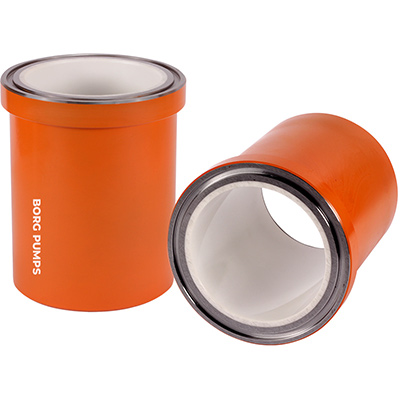
Why the Liner Matters
The liner is a critical wear component of a mud pump. It provides the sealing surface against which the piston moves, maintaining pressure and ensuring effective fluid circulation. A well-maintained liner helps maximize pump efficiency and protect other parts from premature failure.
Causes of Liner Wear
• Abrasive drilling fluids containing solids that gradually grind the liner surface.
• High operating pressures that increase mechanical stress and friction.
• Incorrect piston-to-liner fit, leading to uneven contact and accelerated scoring.
• Use of unsuitable elastomer materials for the specific drilling environment.
• Insufficient lubrication or cooling, causing heat build-up and surface damage.
Symptoms of Liner Wear
Operators should monitor several key signs that indicate excessive liner wear:
• Increased leakage around the piston area during operation.
• Difficulty maintaining stable discharge pressure.
• Visible scoring, grooves, or pitting on the liner bore.
• Rapid failure of piston rubbers despite correct installation.
• Excessive vibration or knocking noises from the fluid end.
When to Replace the Liner
If inspection reveals deep scratches, cracks, or bore diameter outside the manufacturer’s tolerance, replacement is necessary. Continuing to operate with a worn liner accelerates piston wear, increases downtime, and risks damage to the cylinder block.
Conclusion
Regular inspection and timely replacement of liners are essential for reliable mud pump performance. Recognizing the signs of liner wear early helps avoid costly repairs, extend pump life, and ensure uninterrupted drilling operations.
